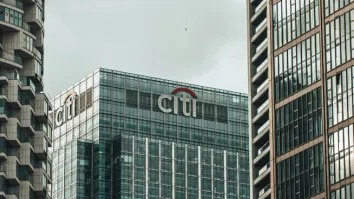
Property woes, unemployment threaten structure letting Chinese banks offload bad loans
NPL securitisations allows banks to sell NPLs to a vehicle.
One of Chinese banks’ lifelines for offloading bad loans is under threat as the unemployment rate continues to rise and property prices continue to take a plunge.
Chinese non-performing loan (NPL) securitisations’ performance is expected to deteriorate in the near term, according to Fitch Ratings. An NPL securitisation is defined as a financial structure where an owner of NPLs sells these to a special purpose orphan vehicle, which funds its buying of the NPL by issuing debt securities into the capital markets, according to Iain Balkwill, a partner at Reed Smith LLP.
In turn, the vehicle will appoint another entity to manage the NPLs, with the aim of maximise recoveries by enacting a new fee structure, Balkwill explained.
“Securitising NPLs is a viable option for Chinese banks to offload imminent credit risks while freeing up regulatory capital because a whole loan market has not yet been fully developed and transfers of non-performing residential mortgages and auto loans in batches are not allowed,” Fitch noted.
ALSO READ: Real estate woes threaten Chinese banks' profits: Natixis
For example, NPL securitisations originated by China’s top-four banks in 2021 aggregated to more than 40% of their outstanding mortgage and card NPLs at year-end.
Fitch warned that NPL securitisations face being disrupted if it becomes less likely that borrowers will be able to resume repayments. The threat of this happening is especially imminent in China, where borrowers have been hurt by the COVID-19 related restrictions and teh slower job market.
“Prolonged restrictions could also dampen security values and lengthen the timeline for judicial liquidations. These factors may increase cash collection volatility and challenge NPL transactions’ performance,” the ratings agency added.
ALSO READ: Mortgage boycott threatens Chinese banks’ loan quality
Rising developer defaults, stalled projects, and deteriorating homebuyer sentiment in the property sector also worsens timelines for securitisation and recovery rates of mortgages.
So far, the market seems steady. Actual recovery rates in Chinese securitised mortgage NPLs are on track to reach a robust 70% within five years of transaction closing, Fitch reported. Of this, 40%-60% are estimated to be from property disposals either via a court-directed sale or amicable sale, with the remainder from re-performing payments made by borrowers previously in arrears.
Actual recovery rates for card NPLs are 10%-30% within two years of transaction closing.


















 Advertise
Advertise








